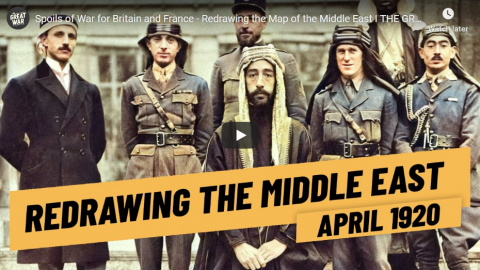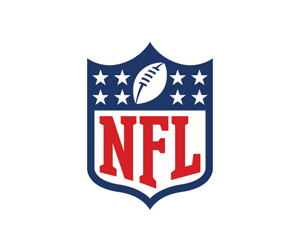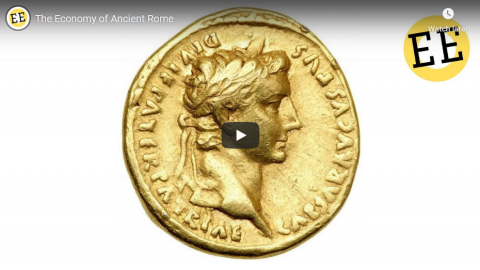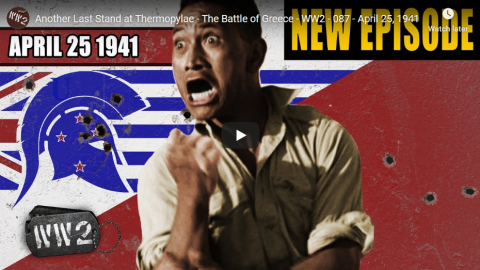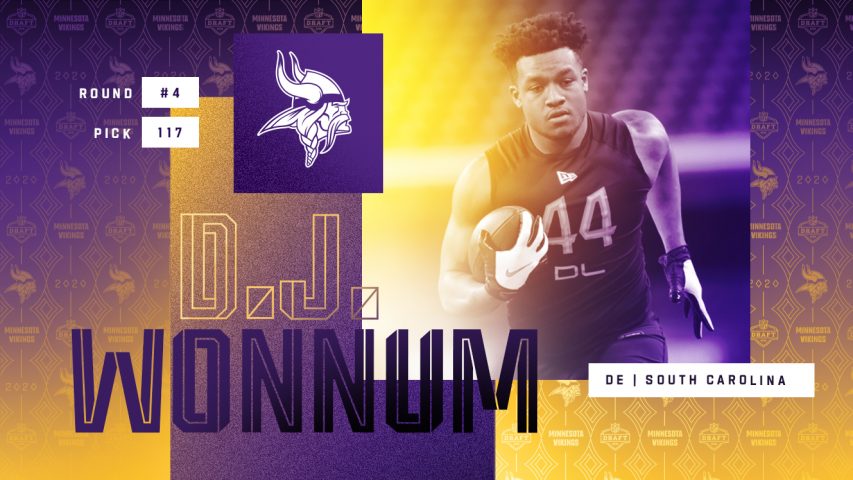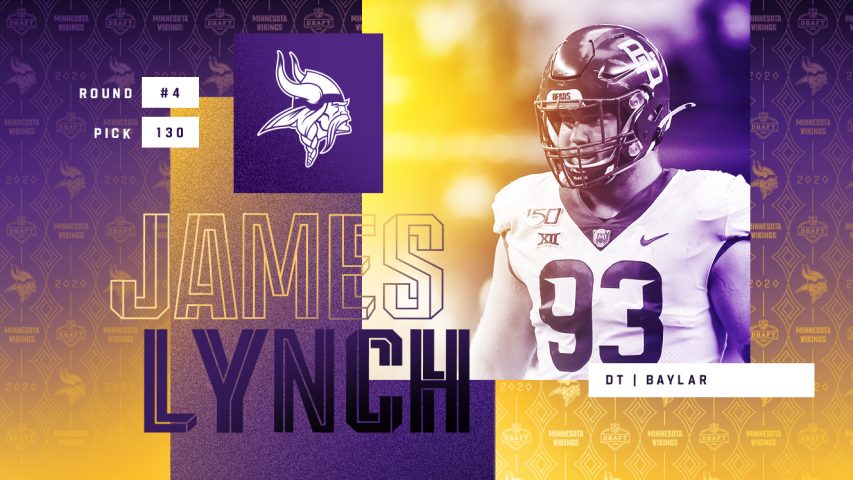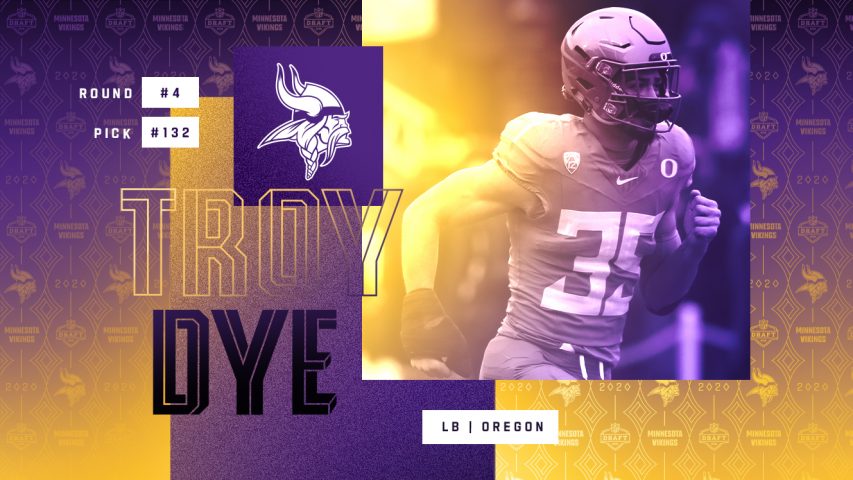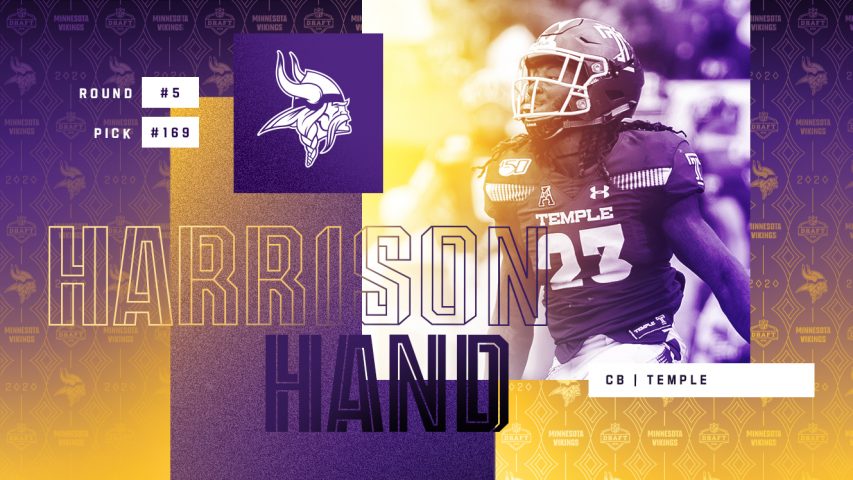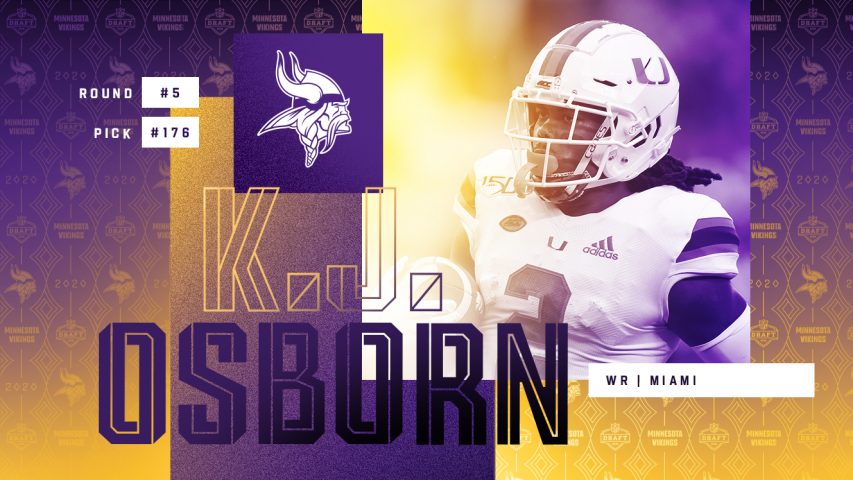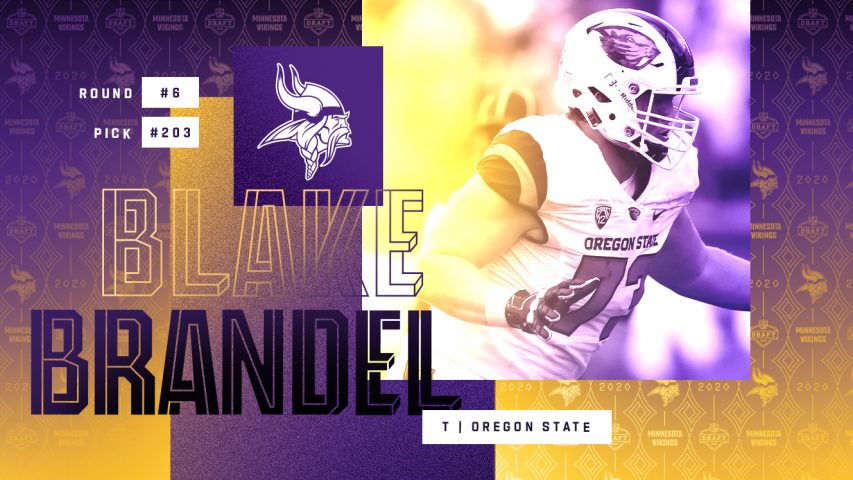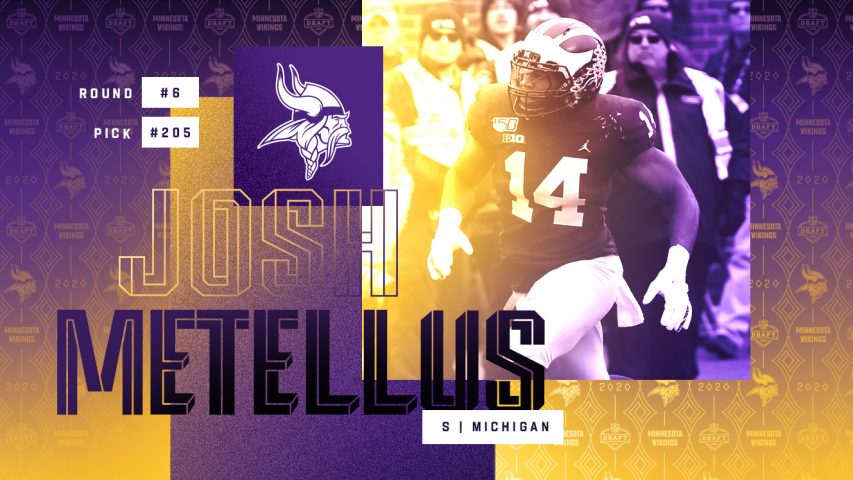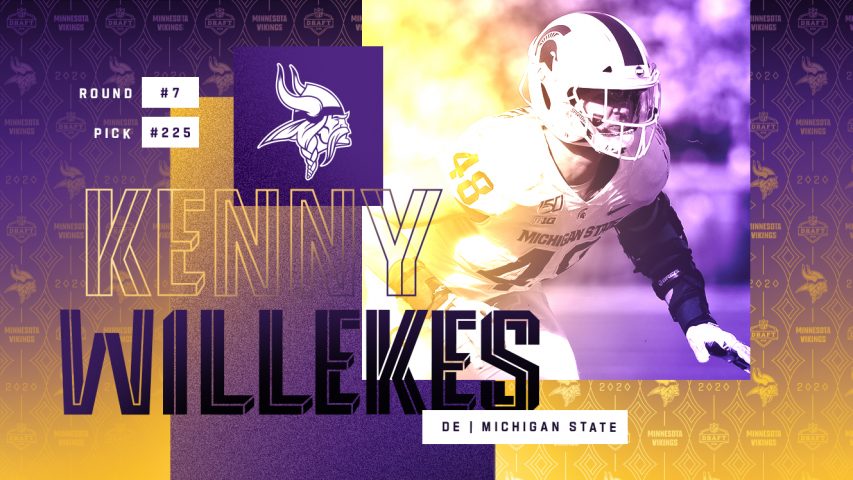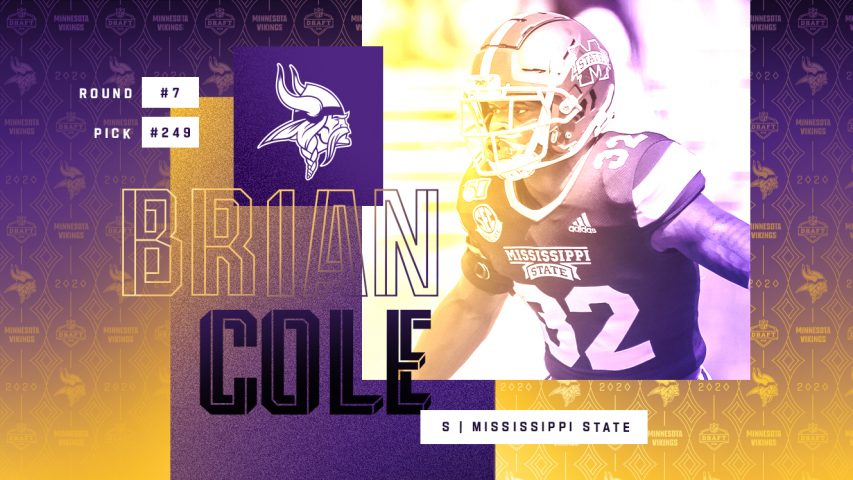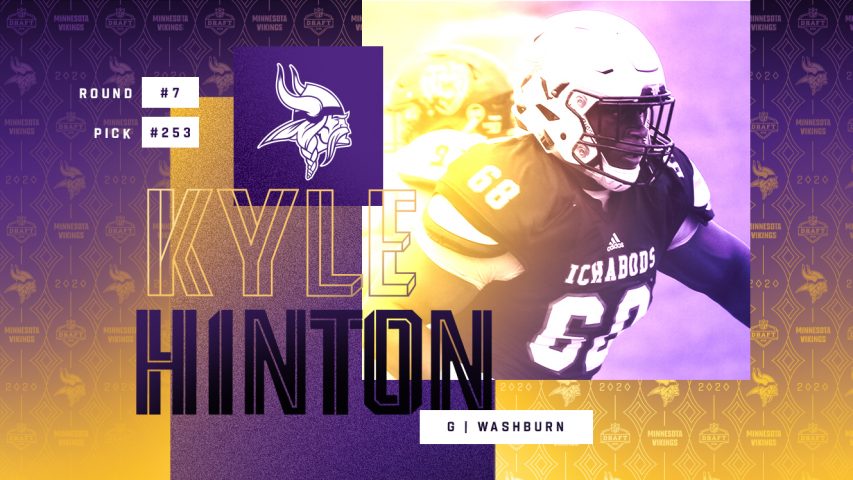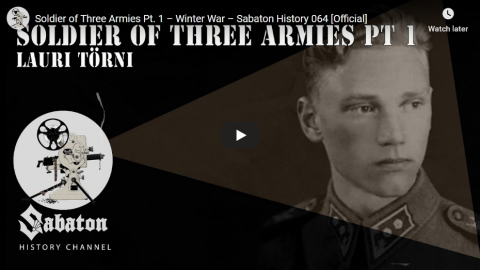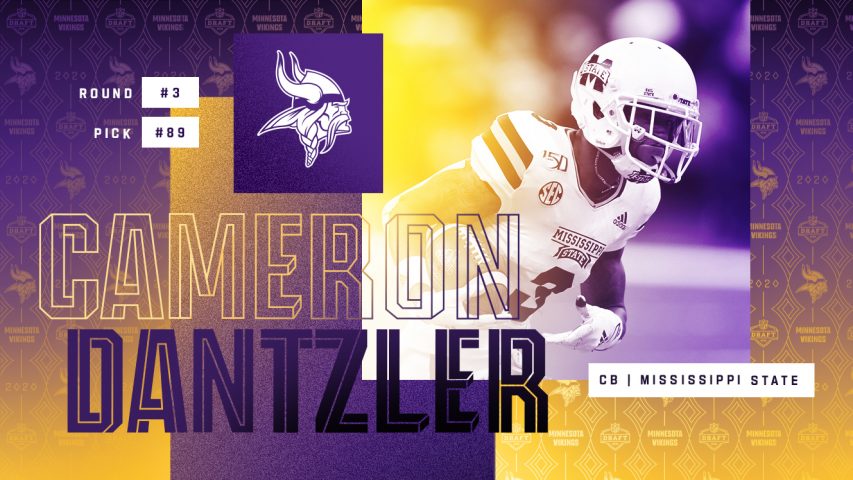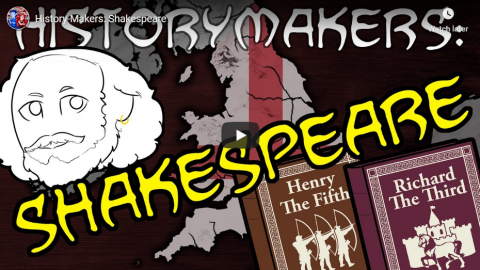Take Sweden, which introduced effective rents controls nationwide in 1947. They were supposed to be a temporary measure, yet they remain in place to this day, despite criticism from academics, think tanks and the OECD. While the intention to create a more socially dynamic society was laudable, the reality has been much bleaker.
Instead of a fairer rental market, where tenants can easily afford rent and live in high-quality housing, Sweden suffers from increased social segregation; eruptions of violence as a result of disagreements in its massive black market of sublet housing; and companies that face immense difficulties in recruiting talent, as potential workers are unable to find suitable accommodation.
Proponents of rent control often emphasise the fairness the measure: rent controls are meant to create a more egalitarian society, where individuals irrespective of their income live in the same neighbourhood and can afford similar quality housing. This could not be further from the truth.
The Swedish experiment shows that it is high-income, well-educated individuals who benefit from rent controls the most, whereas less-educated, or not as well-connected individuals such as younger renters or immigrants, are highly disadvantaged by the system.
In theory, housing stock that becomes available for rent is allocated through the Stockholm Housing Agency, which ensures the rental prices are kept on “an average level”. The average waiting time in Stockholm for such housing allocation is over 11 years. As tenants realise the true value of their contract — e.g. the money they can receive for their apartment on the secondary rental market — they are unwilling to return the property to the agency, even when they move out. Instead, they rent it out to someone in their extended circle of friends or exchange the flat for one in a different area — only in practice, not on paper of course. No wonder that only 0.5% of the housing is returned to the agency, resulting in a massive queue of 670,000 people on Stockholm’s housing waitlist — out of a total population of 970,000.
This system benefits the most well-connected individuals, but highly disadvantages people who lack broad social connections. These groups are often forced into the informal rental market, where the prices are on average double that of the official rent controlled numbers. One in five young Swedish renters face have admitted renting on the black market. Due to the lack of legal arbitration, disagreements between parties can lead to violence and in some cases even murder.
Another problem has been the inflexibility of rental contracts, which have made it difficult for people to move between cities, leading to a fifth of Swedish companies facing severe recruitment problems due to the lack of suitable housing.
Adam Bartha, “Rent controls have failed in cities throughout Europe”, Institute of Economic Affairs, 2020-01-23.
April 28, 2020
QotD: Rent control in Stockholm
April 27, 2020
Spoils of War for Britain and France – Redrawing the Map of the Middle East I THE GREAT WAR 1920
The Great War
Published 25 Apr 2020Sign up for Curiosity Stream and Nebula – and get 40% off annual plans right now: https://curiositystream.com/thegreatwar
100 years ago at the conference of San Remo, one thing became clear: Great Britain and France wanted control over the Middle East. Justified by the fighting in the previous years and painted as “liberators” of the Middle Eastern minorities, the new map of the Middle East emerged – under the cover of the League of Nations Mandate system.
» SUPPORT THE CHANNEL
Patreon: https://www.patreon.com/thegreatwar
Merchandise: https://shop.spreadshirt.de/thegreatwar/» SOURCES
Karsh, Efraim & Karsh, Inari, Empires of the Sand: The Struggle for Mastery in the Middle East 1789-1923, (Cambridge, MA : Harvard University Press, 1999)“Dans Le Levant” Le Temps, August 31, 1919 issue, https://gallica.bnf.fr/ark:/12148/bpt…
Lloyd George, David, Memoirs of the Peace Conference, (New Haven : Yale University Press, 1939) vol. 2
“Mounted Rifles Units” New Zealand History, https://nzhistory.govt.nz/war/aucklan…
Paris, Timothy J. Britain, The Hashemites and Arab Rule 1920-1925, (London : Frank Cass, 2003)
Provence, Michael, The Last Ottoman Generation and the Making of the Modern Middle East, (Cambridge : Cambridge University Press, 2017)
O’Neill, Robert, Official History of Australia in the War of 1914–1918, Volume VII – The Australian Imperial Force in Sinai and Palestine, 1914–1918, (Australian War Memorial, 1941)
“King-Crane Commission Digital Collection” Oberlin College Library. http://dcollections.oberlin.edu/cdm/s…
» SOCIAL MEDIA
Instagram: https://instagram.com/the_great_war
Twitter: https://twitter.com/WW1_Series
Reddit: https://reddit.com/r/TheGreatWarChannel»CREDITS
Presented by: Jesse Alexander
Written by: Jesse Alexander
Director: Toni Steller & Florian Wittig
Director of Photography: Toni Steller
Sound: Toni Steller
Editing: Toni Steller
Mixing, Mastering & Sound Design: http://above-zero.com
Maps: Daniel Kogosov (https://www.patreon.com/Zalezsky)
Research by: Jesse Alexander
Fact checking: Florian WittigChannel Design: Alexander Clark
Original Logo: David van StepholdA Mediakraft Networks Original Channel
Contains licensed material by getty images
All rights reserved – Real Time History GmbH 2020
The NFL may have a problem … everyone seems to have liked the virtual draft better than the “real” thing
It is usually difficult to muster much sympathy for the National Football League, but the record-setting popularity of the 2020 draft is a huge surprise:
The unique presentation of the 2020 NFL Draft established new all-time highs for media consumption in every category. With over 600 camera feeds from homes across the United States, all telecasts of the 2020 NFL Draft reached more than 55 million total viewers across Nielsen-measured channels over the three-day event, up +16% vs. 2019. An average audience of over 8.4 million viewers watched all three days of the 2020 NFL Draft across ABC, ESPN, NFL Network, ESPN Deportes, and digital channels easily breaking the previous high of 6.2 million viewers in 2019 (+35%).
Each day of the 2020 NFL Draft established new highs as an average audience of over 15.6 million viewers watched Round 1 on Thursday (+37% vs. 2019), over 8.2 million viewers watched Rounds 2 & 3 on Friday (+40% vs. 2019), and over 4.2 million viewers watched Rounds 4-7 on Saturday (+32% vs. 2019).
All seven rounds of the 2020 NFL Draft were presented across ABC, ESPN, and NFL Network – the second straight year that The Walt Disney Company partnered with the National Football League to offer a multi-network presentation of the entire Draft.
“I couldn’t be more proud of the efforts and collaboration of our clubs, league personnel, and our partners to conduct an efficient Draft and share an unforgettable experience with millions of fans during these uncertain times,” said NFL Commissioner Roger Goodell. “This Draft is the latest chapter in the NFL’s storied history of lifting the spirit of America and unifying people. In addition to celebrating the accomplishments of so many talented young men, we were pleased that this unique Draft helped shine a light on today’s true heroes – the healthcare workers, first responders, and countless others on the front lines in the battle against COVID-19. We are also grateful to all those who contributed to the NFL family’s fundraising efforts.”
“This year’s NFL Draft clearly took on a much greater meaning and it’s especially gratifying for ESPN to have played a role in presenting this unique event to a record number of NFL fans while supporting the league’s efforts to give back,” said ESPN President Jimmy Pitaro. “The success of this year’s Draft is a testament to the unprecedented collaboration across the NFL, ESPN, and The Walt Disney Co. in the midst of such a challenging time.”
The unique situation of having the vast majority of televised sports activities suspended clearly made a big difference — when you’re the only game in town, you can expect a wider audience — but the online draft seems to have been popular even among people who normally would have tuned in for the event anyway.
The Economy of Ancient Rome
Economics Explained
Published 26 Apr 2020Ancient Rome was perhaps the most significant ancient civilisation to have existed throughout history, the empire lived for over 1000 years and in that time, it gave us the foundations for our modern society. Democracy, a court based legal system, Latin languages and alphabet, three course meals, and perhaps it was one of the first modern economies to move beyond a simple agrarian empire and develop things like modern banking, lending, taxation and yes even financial crisis as we know them today.
In the same way that scholars study a dead language like Latin to discerned the foundation of meaning in our modern dialects economists can study the histories of ancient civilisations like Rome to determine basic economic functions in a time before modern financial systems could skew results and Rome was perhaps the most developed case study we could look at.
#rome #economics #recession
Patreon – https://www.patreon.com/EconomicsExpl…
Discord – https://discord.gg/7kM7Tw9
Enquiries – loungejita@gmail.com
References –
Morley, N., 2002. Metropolis and hinterland: the city of Rome and the Italian economy, 200 BC-AD 200. Cambridge University Press.
Temin, P., 2006. “The economy of the early Roman Empire”. Journal of Economic Perspectives
Temin, P., 2017. The Roman market economy. Princeton University Press.
Garnsey, P., Hopkins, K. and Whittaker, C.R. eds., 1983. Trade in the ancient economy
Brown, P., 2012. Through the Eye of a Needle: Wealth, the Fall of Rome, and the Making of Christianity in the West, 350-550 AD. Princeton University Press.
Braund, D.C., 1983. Gabinius, Caesar, and the publicani of Judaea. Klio
Articles
http://penelope.uchicago.edu/Thayer/E…
Entrepreneurs beyond the atmosphere
Doug Bandow reacts to Donald Trump’s executive order that begins to clear the way for private enterprise in space:

Taken by Apollo 8 crewmember Bill Anders on December 24, 1968, at mission time 075:49:07 (16:40 UTC), while in orbit around the Moon, showing the Earth rising above the lunar horizon.
Despite the current chaos caused by the coronavirus, Washington still must consider the future. Which explains the president’s new executive order that would allow private resource development on the moon and asteroids. It clearly rejects the “common heritage of mankind” rhetoric deployed by the United Nations on behalf of the Law of the Sea Treaty, which four decades ago created a special UN body to seize control of seabed resources.
The Future of Space Exploration
The EO issued earlier this month explained that
Successful long-term exploration and scientific discovery of the Moon, Mars, and other celestial bodies will require partnership with commercial entities to recover and use resources, including water and certain minerals, in outer space.
The measure began the process of revising an uncertain legal regime which currently discourages private sector development.
The administration pointed to the 1979 Agreement Governing the Activities of States on the Moon and Other Celestial Bodies (known as the Moon treaty) and the 1967 Treaty on Principles Governing the Activities of State in the Exploration and Use of Outer Space, including the Moon and Other Celestial Bodies (typically called the Outer Space Treaty). Neither is friendly to entrepreneurs or explorers with a commercial bent.
In response, the president announced that
Americans should have the right to engage in commercial exploration, recovery, and use of resources in outer space, consistent with applicable law. Outer space is a legally and physically unique domain of human activity, and the United States does not view it as a global commons. Accordingly, it shall be the policy of the United States to encourage international support for the public and private recovery and use of resources in outer space, consistent with applicable law.
Space is a Long-Term Prospect
The document’s main directive is for the Secretary of State, in cooperation with other agencies, to “take all appropriate actions to encourage international support for the public and private recovery and use of resources in outer space.” The secretary is to “negotiate joint statements and bilateral and multilateral arrangements with foreign states regarding safe and sustainable operations for the public and private recovery and use of space resources.”
Obviously, the administration’s attention is directed elsewhere at the moment. However, the potential benefits of turning to space are significant. The value of scientific research is obvious and continues to drive government agencies such as NASA. Launch services and space tourism have caught the interest of private operators. Such activities offer fewer legal and practical difficulties than attempting to establish some sort of long-term presence in the great beyond.
More complex development of space is a longer-term prospect. However, that makes it even more imperative to encourage innovation by creating institutions and incentives that encourage responsible development of what truly is the “final frontier.”
Prehistory Summarized: Evolution
Overly Sarcastic Productions
Published 5 Dec 2015Third video in a week? Good lord, what have they been feeding us?
Anyway, Blue’s back, this time with more history! The exciting conclusion to the three-part video series! Our “Return Of The King”! Our “Return Of The Jedi”! Our… wow, a lot of “part three”s are the return of something or other, aren’t they? Let’s pretend this is “The Return Of Bruce”.
QotD: H.L. Mencken’s literary theory
As for me, my literary theory, like my politics, is based chiefly upon one main idea, to wit, the idea of freedom. I am, in brief, a libertarian of the most extreme variety, and know of no human right that is one-tenth as valuable as the simple right to utter what seems (at the moment) to be the truth. Take away this right, and none other is worth a hoot; nor, indeed, can any other long exist. Debauched by that notion, it follows necessarily that I can be only an indifferent citizen of a democratic state, for democracy is grounded upon the instinct of inferior men to herd themselves in large masses, and its principal manifestation is their bitter opposition to all free thought. In the United States, in fact, I am commonly regarded as a violent anti-patriot. But this is simply because most of the ideas upon which American patriotism bases itself seem to me to be obviously sentimental and nonsensical — that is, they have, for me at least, no intelligible relation to the visible facts. I do not object to patriotism when it is logically defensible. On the contrary, I respect it as a necessary corollary to the undeniable inequality of races and people. Its converse, internationalism, appears to me to be almost insane. What an internationalist says, stripping it of rhetoric, is simply that a lion is no more than a large rat.
H.L. Mencken, “Private Reflections”, The Smart Set, 1922-12.
April 26, 2020
Another Last Stand at Thermopylae – The Battle of Greece – WW2 – 087 – April 25, 1941
World War Two
Published 25 Apr 2020The Battle of Greece continues as forces clash once more at the historic site of Thermopylae.
Join us on Patreon: https://www.patreon.com/TimeGhostHistory
Or join The TimeGhost Army directly at: https://timeghost.tvFollow WW2 day by day on Instagram @World_war_two_realtime https://www.instagram.com/world_war_t…
Between 2 Wars: https://www.youtube.com/playlist?list…
Source list: http://bit.ly/WW2sourcesWritten and Hosted by: Indy Neidell
Director: Astrid Deinhard
Producers: Astrid Deinhard and Spartacus Olsson
Executive Producers: Astrid Deinhard, Indy Neidell, Spartacus Olsson, Bodo Rittenauer
Creative Producer: Joram Appel
Post-Production Director: Wieke Kapteijns
Edited by: Iryna Dulka
Sound design: Marek Kamiński
Map animations: Eastory (https://www.youtube.com/c/eastory)Colorizations by:
– Norman Stewart – https://oldtimesincolor.blogspot.com/
– Jaris Almazani (Artistic Man), https://instagram.com/artistic.man?ig…
– Julius Jääskeläinen – https://www.facebook.com/JJcolorization/
– Dememorabilia – https://www.instagram.com/dememorabiliaSources:
– Bundesarchiv, CC-BY-SA 3.0, Bild 101I-163-0318-09/Bauer, Bild 101I-163-0319-03A/Bauer
– Edo leitner from Wikimedia
– Imperial War Museum: E 3830, TR 1762, IWM ART LD 3355, E 676, E 3182, E 3187, E 3178, E 3183, E 2363
– Roll by rivercon from the Noun Project
– Grains by Gan Khoon Lay from the Noun ProjectArchive by Screenocean/Reuters https://www.screenocean.com.
A TimeGhost chronological documentary produced by OnLion Entertainment GmbH.
From the comments:
World War Two
2 days ago (edited)
The war keeps on growing, and were doing our best to keep up with it. As you notice the episodes are often longer these days, but there are still many details we just can’t cover in the weekly episodes for time reasons. That’s why we do our specials and also why we have our Instagram and Facebook feed with headlines of the war day by day. For instance, while we cover the Allied retreat at Thermopylae, Indy just didn’t have space to go into the details about how Australian and New Zealand forces hold back the Wehrmacht while the others retreat. That will instead be the topic of our post on Instagram / Facebook on April 24 here: https://www.instagram.com/world_war_two_realtime/ and on the TimeGhost facebook page. We also dedicated the thumb to that event by featuring a soldier of the 28th (Māori) Battalion of the NZ forces, photographed in North Africa somewhat later in 1941 while doing the Haka. His unit was part of the rear guard at Thermopylae.And on that note we would like to acknowledge that we would never be able to do this massive endeavor without the TimeGhost Army and their financial contribution. Valantis who supported this episode by dedicating it to the Cypriots fighting for the Allies in the war is not only a member of the TG Army, he’s also a valuable contributor in our comment sections and volunteers his time to help us sift through and read every comment posted under any of our videos. So, in this place we would like to once again thank Valantis and the entire TimeGhost Army for keeping us in kit, supplies, and manpower to continue the good fight for remembrance and education, especially in these trying times. You can join our forces here https://www.patreon.com/TimeGhostHistory or here https://timeghost.tv
Spartacus on behalf of the entire TimeGhost team.
Minnesota Vikings 2020 draft – day three, rounds 4-7
 Over the first two days of the draft, Vikings General Manager Rick Spielman addressed some of the most urgent needs of the team without needing to give up additional draft capital to move up for any given player. Having lost the top three cornerbacks from 2019, two rookie corners (Jeff Gladney from TCU, and Cameron Dantzler from Mississippi State) were drafted to potentially fill those roles. Having traded one of the top wide receivers to Buffalo, the team picked up Justin Jefferson from LSU who will be given every opportunity to compete for a starting role. The offensive line was shored up with the second round pick Ezra Cleveland from Boise State, which should allow some improvements to be made over the 2019 line. The Daily Norseman‘s Ted Glover did a draft-day edition of his Stock Market Report for days one and two.
Over the first two days of the draft, Vikings General Manager Rick Spielman addressed some of the most urgent needs of the team without needing to give up additional draft capital to move up for any given player. Having lost the top three cornerbacks from 2019, two rookie corners (Jeff Gladney from TCU, and Cameron Dantzler from Mississippi State) were drafted to potentially fill those roles. Having traded one of the top wide receivers to Buffalo, the team picked up Justin Jefferson from LSU who will be given every opportunity to compete for a starting role. The offensive line was shored up with the second round pick Ezra Cleveland from Boise State, which should allow some improvements to be made over the 2019 line. The Daily Norseman‘s Ted Glover did a draft-day edition of his Stock Market Report for days one and two.
At the end of the third round on Friday, Spielman took a great offer from the New Orleans Saints, swapping the Vikings’ 105th pick for the Saints’ 130th, 169th, 203rd, and 244th picks. This left the Vikings with a final day sheaf of thirteen draft picks to use in the last four rounds of the draft (3 in the 4th round, 3 in the 5th round, 3 in the 6th round, and 4 in the 7th round). “Trader Rick” was expected to spend the whole day engaged in his all-time favourite activity … swapping draft picks.
- Round 4 (117th overall) — received from San Francisco — South Carolina DE D.J. Wonnum. In Rick Spielman’s mini-video after the pick, he said “He’s a long, athletic defensive end. He ran 4.6 at the combine … I know the success we have had and Coach Andre Patterson has had with these long athletic defensive ends and I know our coaches can’t wait to get their hands on him.” Courtney Cronin said “Wonnum has long been a target of Minnesota’s throughout this draft process. At 6-foot-5, 258 pounds, Wonnum looks like a physical carbon copy of Danielle Hunter when he was coming out of LSU five years ago. […] With Ifeadi Odenigbo primed to take on some of Griffen’s duties, the Vikings needed to address depth at defensive end and may be able to use Wonnum as a rotational edge rusher as a rookie. The Georgia native had 30 starts for the Gamecoks with 137 tackles, 29.5 tackles for loss and 14.0 sacks”. Daniel House said “He has impressive testing metrics, including high percentiles in the vertical jump, 40-yard dash and broad jump”. Arif Hasan, on the other hand thinks Wonnum was overdrafted: “I don’t really see much upside. Reasonably athletic run defender who adds competition. High motor but needs technical development. 180th on the consensus board, so a reach by that valuation”
- Round 4 (130th overall) — received from New Orleans — Baylor DT James Lynch. Rick Spielman said “Had a great interview with us at the combine, and just another great addition, not only from a football standpoint but from a high-character, high-quality standpoint as well.” Courtney Cronin said “Minnesota drafted Baylor’s all-time career leader in sacks (22.0) when they took Lynch. Lynch is a versatile, powerful pass rusher who could give the Vikings a boost with their interior pass rush from the three-technique spot after he notched 13.5 sacks and 19.5 tackles for loss last season. A unanimous All-American, effort is the first thing that jumps out to evaluators when looking at his college film. His sack numbers are one thing, but the amount of pressure Lynch generates on quarterbacks makes him a constant disruption in the backfield.” Chris Tomasson quotes Dane Brugler: “Lynch doesn’t have ideal length, which might limit his ideal scheme fit, but he competes with balance and power to hold up inside with the dependable football character that will endear himself to coaches.”
- Round 4 (132nd overall) — Oregon LB Troy Dye. Chris Tomasson quotes Dane Brugler’s analysis: “Dye looks like a modern-day linebacker with his length and athleticism, but he plays more like a safety with questions about his functional strength and scheme fit in the NFL projecting as an immediate backup and special teamer”. Courtney Cronin said “The 6-foot-3, 231-pound Dye had been a difference maker at Oregon since his freshman year and led the Ducks in tackles for four straight seasons. He has good pedigree, too, as his brothers all played college football as did his dad. His size could be a concern, although his build is similar to Eric Kendricks and Cameron Smith.” Geoff Schwartz: “Troy Dye will be a fantastic pro. He’s just a playmaker on defense. He will be awesome on special teams. He played a game this season with a cast on his hand. The cast broke and he kept playing.”
- Round 5 (155th overall) — received from Buffalo for Stefon Diggs — Traded to Chicago for a 2021 fourth-round pick.
- Round 5 (169th overall) — received from New Orleans — Temple CB Harrison Hand. Daniel House: “Hand posted a 41-inch vertical at the NFL Scouting Combine. He also ranked in the 96th percentile of the broad jump, per MockDraftable. Zimmer is loading up on defensive back talent in this draft. Gladney, Dantzler and Hand.” Courtney Cronin: “Hand’s physicality makes him a good tackler, and he prides himself on using his length to cover. It’s unclear how the Vikings’ see him fitting given several scouting reports project him best as a Cover 3 fit who can provide support against the run and play in the box. He might become a cornerback used in specific schemes or could transition to safety in the NFL.”
- Round 5 (176th overall) — received from San Francisco — Miami WR K.J. Osborn. Courtney Cronin: “At the University of Buffalo, Obsorn played primarily in the slot. After he transferred to Miami following the 2018 season, he started all 13 games as a senior where he found a home on the outside. Osborn’s stats don’t jump off the page, though he led the Hurricanes in receiving (50 catches, 547 yards, 5 TDs), but his contributions as a return specialist made him a well-rounded player. In fact, the Vikings are intrigued by his abilities as a punt returner (15.9 yards per return at Miami) and could consider him for that role as Mike Hughes’ responsibilities in the secondary are expected to increase this season.” Chris Tomasson: “Osborn had 50 catches for 547 yards for Miami. Draft analyst Dane Brugler: ‘Doesn’t explode out of his breaks to separate upon command, but he is instinctive and dependable with the ‘make-it’ attitude that will help him compete for a reserve/special teams role.'”
- Round 6 (201st overall) — received from New Orleans — Traded to Baltimore for pick 225 in the seventh round and a 2021 fifth round pick.
- Round 6 (205th overall) — Oregon State OL Blake Brandel. Christopher Gates: “Brandel had a very good college career with the Beavers, starting 48 consecutive games for them over the course of his career. With the Vikings needing depth on the offensive line, he’s going to have an opportunity to compete for a spot as the swing tackle on the roster. He may need some time to develop, but the Vikings obviously see something in him that they like.” Chris Tomasson: “Draft analyst Dane Brugler on new #Vikings tackle Blake Brandel: ‘Brandel has athletic limitations, but he moves with composed feet and patient hands to strike-and-anchor, projecting as a possible NFL swing backup.'”
- Round 6 (207th overall) — received from Buffalo for Stefon Diggs — Michigan S Josh Metellus. Chad Graff says “The Vikings drafted S Josh Metellus from Michigan with the No. 205 overall pick (sixth round). They had only two safeties on the roster. @dpbrugler is a big fan. He wrote: Metellus may not win a job in camp, ‘but if he gets into an NFL game, he might not give the job back.'” At SKOR North, Matthew Coller said “At the Senior Bowl [Metellus] took some snaps as a cornerback to demonstrate that he could handle one-on-one matchups with wide receivers. According to PFF, he allowed only 50% of his targets to be caught and gave up a QB rating against of 68.1 while playing over 600 snaps three years in a row. PFF also noted his success with the Wolverines as a blitzer. The Vikings’ safety room is more or less empty with the exit of Andrew Sendejo and Jayron Kearse in free agency. Now they have a player to develop with the possibility of contributing quickly in a big nickel situation if he proves trustworthy right away.”
- Round 7 (225th overall) — received from Baltimore — Michigan State DE Kenny Willekes. Chris Tomasson said “Draft analyst Dane Brugler had Kenny Willekes as a potential fifth rounder so that could be good value for #Vikings.” and “Willekes lacks the anchor and length to be a consistent edge-setter vs NFL offensive tackles but his resilient mentality and competitive motor translate to production, which should land him in a defensive line rotation”. Chad Graff: “A line from @dpbrugler’s scouting report on Vikings seventh-round pick Kenny Willekes: ‘Plays pissed off and competes like the other team peed in his Cheerios.'” I’ve got to admit, this is pretty impressive. Matthew Coller said “Willekes was a terrific run defender in college, grading over 80 in every year by PFF’s system and developed as a pass rusher, going from zero to nine sacks in his final year at Michigan State and adding 39 pressures. This is one of the Vikings’ best value selections. By PFF he was graded as a third-round pick but his lack of NFL-caliber athleticism likely hurt his grade by teams. He only ran a 4.87 40-yard dash at the Combine and is undersized at 6-foot-3 but Willekes already overcame being a walk-on at Michigan State and has an opportunity to do so again in Minnesota.”
- Round 7 (244th overall) — received from New Orleans — Iowa QB Nate Stanley. Courtney Cronin said, “Here’s where the Vikings strategy of not having to bid for college free agents might be coming into play. Stanley was projected as late draft pick/priority FA. Minnesota now has him on a rookie deal and doesn’t have to bid with other teams like they did w Jake Browning last yr”. Vikings Corner said “He is a big-armed QB with experience in a zone running/bootleg heavy offense. Last year, Stanley completed 59% of his passes for 2,951 yards. He tossed 16 touchdowns and seven interceptions.”
- Round 7 (249th overall) — compensatory pick for losing Trevor Siemian in free agency — Mississippi State S Brian Cole II. Jack Day said “Cole is another safety that isn’t the greatest when it comes to attacking the ball when it’s in the air, which is weird considering he is a former wide receiver. He is another physical prospect that needs some work in pass coverage, but is more than willing to deliver the big hits.
He is able to bump down and cover running backs and tight ends in the slot and he has the size to match up well with bigger tight ends. Cole stands at 6-2, 213 pounds and runs a 4.52 40-yard dash. In his 2019 season, Cole was a captain at Mississippi State. He registered 65 tackles, 7.5 tackles for loss, two sacks and an interception in his final collegiate season.” - Round 7 (253rd overall) — compensatory pick for losing Tom Compton in free agency — Washburn G Kyle Hinton. Chris Tomasson said “Draft analyst Dane Brugler on Kyle Hinton: ‘Faces a position switch and a sizeable jump in competition at the next level, but his athletic traits and intelligence are exciting foundation traits for a team willing to be patient, projecting as a low risk, high reward guard/center.'” Courtney Cronin said “Hinton played left tackle in college at 6-foot-2, 295 pounds. His size is why he’ll need to move inside to guard or center if he has any shot of making an NFL roster. But that’s not the point. After not being able to come to an agreement with Washington in a trade for Trent Williams, the only upgrade the Vikings made on the O-line in 2020 was drafting Boise State’s Ezra Cleveland in the second round. That’s not enough to fix an entire unit, so the Vikings will now have to address how they want to move forward, and who they’ll want to move around and try out at different positions, as they continue through an unprecedented offseason.”
With the two compensatory picks they'll likely get next year, the #Vikings already have 11 picks for 2021.
1st
2nd
3rd x2 (1 comp, Waynes)
4th x 3 (Bills, Bears)
5th
6th x 2 (1 comp, Alexander)
7th— Daily Norseman, Skolcially Distancing Since '06 (@DailyNorseman) April 25, 2020
And there we have it, at fifteen picks it’s the largest draft class for any NFL team in the seven-round draft era.
The 2020 #NFLDraft has been pretty crazy for the Minnesota #Vikings. Crazier still? They’re already up to 12 picks for the 2021 selection meeting. #NFL #Skol https://t.co/FotrYZrkvP
— Daily Norseman, Skolcially Distancing Since '06 (@DailyNorseman) April 25, 2020
“Soldier of Three Armies” Pt. 1 – Winter War – Sabaton History 064 [Official]
Sabaton History
Published 25 Apr 2020Started out as a reserve, soon promoted well deserved, and the legend has begun. Lauri Allan Törni, the soldier of three armies. Born and raised in Viipuri in Finnish Karelia, Lauri Törni grew up into a world of tensions, of class-consciousness and conflicting ideologies. Boxed in between the Soviet Union and Germany, Finland was preparing for war of survival. The Winter War would be the first place for Lauri Törni to see battle and begin his legacy as a born soldier.
Support Sabaton History on Patreon: https://www.patreon.com/sabatonhistory
Listen to “Soldier of Three Armies” on the album Heroes:
CD: http://bit.ly/HeroesStore
Spotify: http://bit.ly/HeroesSpotify
Apple Music: http://bit.ly/HeroesAppleMusic
iTunes: http://bit.ly/HeroesiTunes
Amazon: http://bit.ly/HeroesAmz
Google Play: http://bit.ly/HeroesGooglePCheck out the trailer for Sabaton’s new album The Great War right here: https://www.youtube.com/watch?v=HCZP1…
Listen to Sabaton on Spotify: http://smarturl.it/SabatonSpotify
Official Sabaton Merchandise Shop: http://bit.ly/SabatonOfficialShopHosted by: Indy Neidell
Written by: Markus Linke and Indy Neidell
Directed by: Astrid Deinhard and Wieke Kapteijns
Produced by: Pär Sundström, Astrid Deinhard and Spartacus Olsson
Creative Producer: Joram Appel
Executive Producers: Pär Sundström, Joakim Broden, Tomas Sunmo, Indy Neidell, Astrid Deinhard, and Spartacus Olsson
Post-Production Director: Wieke Kapteijns
Edited by: Iryna Dulka
Sound Editing by: Marek Kaminski
Maps by: Eastory – https://www.youtube.com/c/eastoryArchive by: Reuters/Screenocean https://www.screenocean.com
Music by Sabaton.Sources:
– Lauri Törni Perinnekilta
– Helsinki City Museum
– Finnish Heritage Agency
– sa-kuva.fiAn OnLion Entertainment GmbH and Raging Beaver Publishing AB co-Production.
© Raging Beaver Publishing AB, 2019 – all rights reserved.
From the comments:
Sabaton History
2 days ago
Hello everyone! We hope you all stay safe and healthy! Due to the current situation, the interview part had to be recorded via webcam and the quality is sadly not the best. We apologize for that. Still we try to keep to our weekly schedule and bring you exciting new episodes of Sabaton History!
“If it saves just one life…”
Hector Drummond illustrates the moral failure of falling back on the “if it saves just one life” trope as a justification for any and all restrictions on free people:
Let me ask you a question. Would you give up your job, your savings, your kids’ economic future, your pension, your parents’ current pension, your house, and your mental health, if I told you that doing so may possibly extend my old, sick grandfather’s life by a year or two? I don’t suppose you’d be too keen, would you? In fact, even the most mild-mannered of people is likely to get angry at the sheer effrontery of such a request.
What if I told the world the same thing? What if I told the world that if everyone in every country gave up their wordly possessions, and spent the rest of their lives in grinding poverty, then it’s possible that my grandfather might get to see Christmas? And suppose that there was some bare plausibility to this, based on a computer model developed by scientists at Imperial College. What do you think the world is likely to say to me? The polite response would be, “Sorry to hear about your grandfather, but we’re not going to do this”. The less polite response would be more like … well, just incredulous laughter, and slammed doors.
The reason I bring up these hypothetical scenarios, though, is that all over social media we are hearing about the Covid-19 lockdown being “worth it if it saves just one life”. But would the people saying this really be willing to give up, say, their own house, car and possessions and teenage daughter to someone who is suicidally depressed over their lack of prospects in life? No. Would they be prepared to serve ten years in jail if it saved the life of someone at risk of being killed by gangsters? No. Would they be happy with having the government forcibly remove a kidney from them to extend the life of someone with failing kidneys? No. Economic ruin and loss of liberty is not something we generally regard as a fair trade for a stranger’s life. Generally even the bleeding hearts among us will say, and rightfully so, “I’m sorry for this person, but they are not entitled to this, and I will not damage my life to any great extent for them”. Charitable donations are one thing. So is volunteer service. But that’s it.
Another thing I am seeing is people who say, “Anything is worth it if it saves lives”. Anything? Really? Shall we ban alcohol then? Because some people die from alcohol. Cars? Paracetamol? Steak knives? Shall we ban mobile phones, because terrorists might use them to communicate with? Shall we lock up for life anyone convicted of a minor juvenile crime, in case they turn out to be a killer? The whole idea is too ridiculous for words, yet all over the world there are fearful people hiding in their homes and posting such thoughts. It is one thing to feel sorry for them, but their stupid ideas shouldn’t pass unchallenged.
Where have all the airships gone? | James May’s Q&A (Ep 8) | Head Squeeze
BBC Earth Lab
Published 21 Feb 2013James May talks us through the rise and fall of airships.
James May’s Q&A:
With his own unique spin, James May asks and answers the oddball questions we’ve all wondered about from “What Exactly Is One Second?” to “Is Invisibility Possible?”
QotD: Bio-engineering
In any case I don’t think we’re really going to have strange new hybrid species; it’s more likely people will seek some sort of body modification that will make today’s tongue studs look as tame as Hello Kitty temporary tattoos. I’m guessing that young guys will go for the elk horns, which at least would make bar fights more interesting. Young women would opt for a Bambi tail. Gastronomes would shyly ask their doctor if they could get some cow genes — multiple stomach chambers, one for each course! — and geeks would request those agile monkey toes that come in handy when you’re up all night writing viruses. We’ll be shocked at first; they’ll be ostracized. In 2064 a presidential candidate will be forced to withdraw when someone digs up college pictures that show him sporting a scaly tail. Hey, all the kids had them. It fell off. I have no idea where it is now. But by 2096 we’ll not only be used to it, we’ll have a governor with a unicorn horn.
Unless we stop now. And I know what you’re saying: Oh, it’s easy for you to say, Mr. Stop-the-progress-of-science-for-some-ridiculous-ethical-reason. Actually, no, it’s not easy for me to say. This forked tongue I got from the snake gene implant is not exactly working out. On the other hand, I don’t have to change clothes; I just molt twice a year. On the other, my wife hates finding that thing in the hamper.
James Lileks “In the genes department”, Star Tribune, 2005-02-06.
April 25, 2020
Minnesota Vikings 2020 draft – day two, rounds 2 and 3
 The Minnesota Vikings entered the second day of the NFL’s first online draft holding twelve draft picks in total, with identified needs at offensive guard, offensive tackle, defensive end, defensive tackle, cornerback, wide receiver, and (potentially) safety. With such a long shopping list, it was widely expected that the team would be eager to move up to improve on the three day two picks:
The Minnesota Vikings entered the second day of the NFL’s first online draft holding twelve draft picks in total, with identified needs at offensive guard, offensive tackle, defensive end, defensive tackle, cornerback, wide receiver, and (potentially) safety. With such a long shopping list, it was widely expected that the team would be eager to move up to improve on the three day two picks:
- Round 2 (58th overall) — OT Ezra Cleveland, Boise State. The Vikings don’t absolutely need to replace Riley Rieff at left tackle, but if Cleveland shows he’s up to the job, it gives the team a lot of flexibility on the left side of the offensive line. There was reportedly some discussion last season to shifting Rieff inside to take the left guard position, replacing Pat Elflein, and that now appears to be a stronger option for the 2020 season. Alternatively, Cleveland could be given a season at guard (although he doesn’t have the ideal body for working on the interior OL) with an eye to replacing Rieff in 2021.
- Round 3 (89th overall) — CB Cameron Dantzler, Mississippi State. The Vikings needed at least one more cornerback and Dantzler was one of the higher-ranked day two corners on a lot of big boards. His draft stock took a hit with a slower-than-expected sprint time at the NFL combine.
- Round 3 (105th overall — compensatory pick for losing Sheldon Richardson in 2019) — traded to New Orleans for the 130th (4th round), 169th (5th round), 203rd (6th round), and 244th picks (7th round).
By this point, NFL Commissioner Roger Goodell was starting to show the fatigue:
tfw you're done reading picks but you got like 15 to go before you can go to bed. pic.twitter.com/6hTHbOMX0d
— Ted Social Distancing Glover (@purplebuckeye) April 25, 2020
History-Makers: Shakespeare
Overly Sarcastic Productions
Published 24 Apr 2020“The Bard” is not only an essential class in any D&D party, but a byword for England’s most famous writer. We’ve covered a bit of Shakespeare before on OSP — just a bit, really, nothing major, only a dozen — but today we’ll look at how William got to Bard-ing, and how he accidentally became England’s biggest Historian.
SOURCES and Further Reading: The Introduction and play-texts of the Folger Shakespeare Library (The best way to read Shakespeare), “Shakespeare: A Very Short Introduction” by Wells
This video was edited by Sophia Ricciardi AKA “Indigo”. https://www.sophiakricci.com/
Our content is intended for teenage audiences and up.PATREON: https://www.Patreon.com/OSP
DISCORD: https://discord.gg/h3AqJPe
MERCH LINKS: https://www.redbubble.com/people/OSPY…
OUR WEBSITE: https://www.OverlySarcasticProductions.com
Find us on Twitter https://www.Twitter.com/OSPYouTube
Find us on Reddit https://www.Reddit.com/r/OSP/

